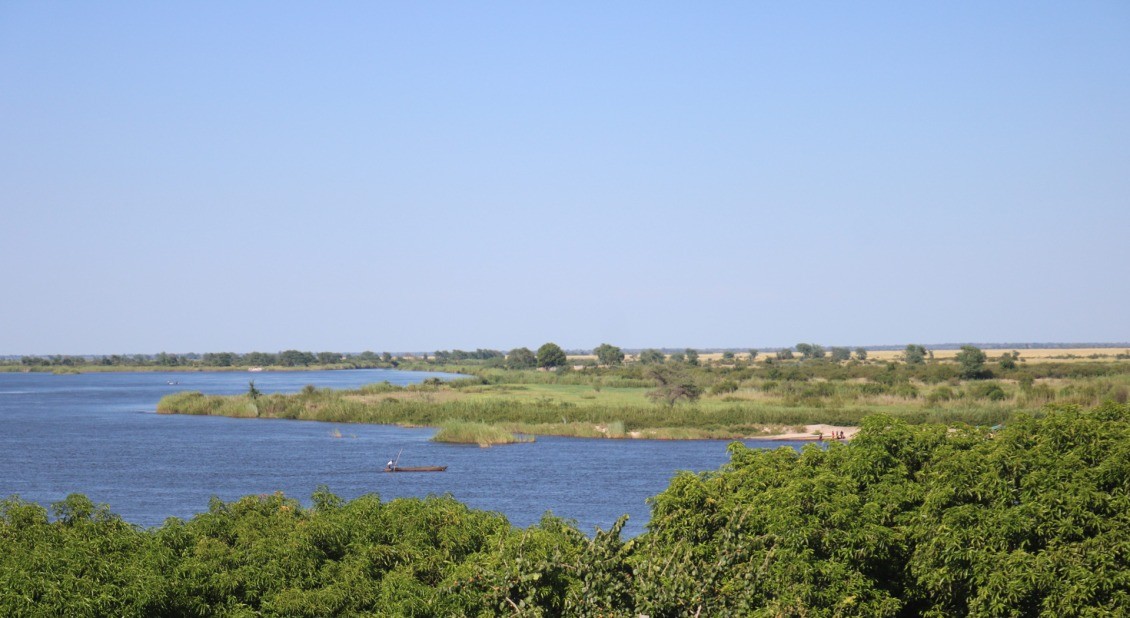Travel Logs are more than just a record of your journey; they are a gateway to reliving experiences, sharing adventures, and inspiring others. SIXT.VN understands the value of preserving your travel memories, especially when exploring the vibrant landscapes and cultures of Vietnam. Let’s dive into creating travel logs that capture the essence of your trips, offering both personal enjoyment and inspiration for fellow travelers. With our comprehensive travel services, you can focus on creating unforgettable memories while SIXT.VN takes care of all your transportation and accommodation needs.
1. What is a Travel Log and Why Should You Keep One?
A travel log is a detailed record of your travels, encompassing your experiences, observations, and reflections. Keeping a travel log offers numerous benefits, creating a personal archive of your journeys, enhancing your memory, providing inspiration, and offering valuable insights.
1.1. Personal Archive of Your Journeys
A travel log serves as a time capsule, preserving your adventures for future reminiscing. It’s a personal collection of moments, experiences, and discoveries, all recorded in your own unique voice. This archive becomes a cherished keepsake, allowing you to relive your travels and share them with loved ones.
1.2. Enhancing Memory and Reflection
Documenting your travels prompts you to actively engage with your surroundings, enhancing memory and encouraging reflection. Writing down your thoughts and experiences helps solidify them in your mind, creating lasting memories. The act of reflection allows you to gain new perspectives and insights from your journeys.
1.3. Inspiration for Future Adventures
Your travel log can serve as a source of inspiration for future adventures. Rereading your past entries can spark new ideas, remind you of places you want to revisit, and motivate you to explore new destinations. It’s a treasure trove of travel inspiration, personalized to your tastes and preferences.
1.4. Sharing Experiences with Others
Travel logs offer a unique way to share your experiences with others, whether through personal storytelling or public platforms. Your log can inspire friends, family, and fellow travelers to embark on their own adventures. Sharing your insights and recommendations can help others plan their trips and discover new places.
2. What are the Key Elements of a Compelling Travel Log?
Crafting a compelling travel log involves including key elements that bring your journey to life. These elements include detailed descriptions, personal reflections, practical information, and visual aids.
2.1. Detailed Descriptions of Destinations
Provide vivid descriptions of the places you visit, capturing the essence of each location. Describe the sights, sounds, smells, and tastes that make each destination unique. Include details about the architecture, landscape, culture, and local customs.
2.2. Personal Reflections and Emotions
Share your personal thoughts and feelings about your experiences. Describe how each destination made you feel, what you learned, and how the journey impacted you. Expressing your emotions adds depth and authenticity to your travel log.
2.3. Practical Information for Other Travelers
Include practical information that can help other travelers plan their trips. Provide details about transportation, accommodation, food, and activities. Share tips on how to navigate the destination, avoid common pitfalls, and make the most of their visit.
2.4. Visual Aids: Photos, Sketches, and Maps
Enhance your travel log with visual aids such as photos, sketches, and maps. Photos capture the visual beauty of your destinations, while sketches add a personal artistic touch. Maps provide context and help readers visualize your journey.
 Farmers in Lukanda Agriculture Camp are enrolled in Action Against Hunger's program, showcasing community engagement
Farmers in Lukanda Agriculture Camp are enrolled in Action Against Hunger's program, showcasing community engagement
3. How to Choose the Right Format for Your Travel Log?
Selecting the right format for your travel log depends on your personal preferences and goals. Options include traditional notebooks, digital documents, blogs, and vlogs.
3.1. Traditional Notebooks: The Classic Approach
Traditional notebooks offer a tangible and personal way to document your travels. They allow you to physically write, sketch, and paste mementos, creating a unique and tactile record of your journey.
3.2. Digital Documents: Versatile and Accessible
Digital documents, such as word processors or note-taking apps, provide versatility and accessibility. They allow you to easily type, edit, and organize your entries. Digital logs can also be easily shared and backed up.
3.3. Travel Blogs: Sharing Your Adventures Online
Travel blogs offer a platform to share your adventures with a wider audience. They allow you to combine text, photos, and videos, creating an engaging and interactive travel log. Blogging can also connect you with other travelers and create a community around your journeys.
3.4. Vlogs: Capturing Your Journey on Video
Vlogs, or video logs, provide a dynamic and immersive way to document your travels. They allow you to capture your experiences in real-time, showcasing the sights, sounds, and emotions of your journey. Vlogging can be a powerful way to connect with viewers and share your travel adventures.
4. What are the Essential Tools for Creating a Travel Log?
Equipping yourself with the right tools can make creating a travel log easier and more enjoyable. Essential tools include a reliable writing instrument, a camera or smartphone, a notebook or digital device, and a map or GPS.
4.1. Writing Instruments: Pens, Pencils, and More
Choose writing instruments that you find comfortable and reliable. Pens offer precision and permanence, while pencils allow for easy editing and sketching. Consider carrying a variety of writing instruments to suit different purposes.
4.2. Camera or Smartphone: Capturing Visual Memories
A camera or smartphone is essential for capturing visual memories of your travels. Choose a device that takes high-quality photos and videos, and is easy to carry and use. Consider bringing extra batteries or a portable charger to ensure you never run out of power.
4.3. Notebook or Digital Device: Recording Your Thoughts
Whether you prefer a traditional notebook or a digital device, choose a method for recording your thoughts and observations. A notebook offers a tactile and distraction-free writing experience, while a digital device provides versatility and accessibility.
4.4. Map or GPS: Navigating and Documenting Your Route
A map or GPS can help you navigate your destinations and document your route. A physical map offers a tangible and visual representation of your journey, while a GPS provides precise location tracking and navigation assistance.
5. How to Start Your Travel Log: A Step-by-Step Guide
Starting a travel log can seem daunting, but breaking it down into steps can make the process more manageable. The steps include setting a clear purpose, choosing a format, creating an initial entry, developing a routine, and reviewing and reflecting.
5.1. Define Your Purpose and Goals
Before you start, define your purpose and goals for keeping a travel log. Are you creating a personal archive, sharing your adventures with others, or seeking to inspire future travelers? Defining your purpose will help guide your entries and keep you motivated.
5.2. Choose Your Preferred Format
Select the format that best suits your preferences and goals. Consider whether you prefer a traditional notebook, digital document, blog, or vlog. Choose a format that you find comfortable and enjoyable to use.
5.3. Begin with Your First Entry
Start your travel log with your first entry. Describe your initial impressions of your destination, your travel preparations, or your reasons for embarking on the journey. Don’t worry about perfection; just start writing and let your thoughts flow.
5.4. Develop a Consistent Routine
Establish a consistent routine for writing in your travel log. Set aside time each day or week to record your experiences. Whether you write in the morning, evening, or during your travels, consistency will help you stay on track.
5.5. Regularly Review and Reflect
Regularly review and reflect on your travel log entries. Rereading your past entries can help you relive your experiences, gain new insights, and identify patterns or themes in your travels. Reflection can deepen your understanding of yourself and the world around you.
6. What are Some Creative Writing Prompts for Travel Logs?
Creative writing prompts can help you overcome writer’s block and add depth to your travel log entries. Prompts include describing a memorable meal, reflecting on a cultural experience, capturing a sensory moment, and writing a letter to your future self.
6.1. Describe a Memorable Meal or Food Experience
Food is an integral part of travel, and describing a memorable meal can transport you back to a specific place and time. Describe the flavors, aromas, and textures of the food, as well as the atmosphere of the restaurant or market.
6.2. Reflect on a Cultural Experience or Encounter
Reflect on a cultural experience or encounter that had a profound impact on you. Describe what you learned, how it made you feel, and how it changed your perspective.
6.3. Capture a Specific Sensory Moment in Detail
Capture a specific sensory moment in detail, focusing on the sights, sounds, smells, tastes, and textures that you experienced. Describe the moment as vividly as possible, using descriptive language and sensory details.
6.4. Write a Letter to Your Future Self
Write a letter to your future self, reflecting on your current experiences and hopes for the future. Include advice, lessons learned, and memories you want to preserve.
 Project Officers Namunji Mubita and Samuel Mwanza are based in Zambia's Western Province, illustrating their dedication to local communities
Project Officers Namunji Mubita and Samuel Mwanza are based in Zambia's Western Province, illustrating their dedication to local communities
7. How Can You Incorporate Photos and Visuals into Your Travel Log?
Incorporating photos and visuals can enhance your travel log and bring your stories to life. Strategies include selecting high-quality images, adding captions and descriptions, creating photo collages, and using sketches and drawings.
7.1. Select High-Quality and Relevant Images
Choose photos that are visually appealing and relevant to your travel log entries. Select images that capture the essence of your destinations and experiences.
7.2. Add Captions and Descriptions to Your Photos
Add captions and descriptions to your photos to provide context and tell a story. Describe the location, the people in the photo, and the significance of the moment.
7.3. Create Photo Collages to Tell a Story
Create photo collages to tell a visual story of your travels. Arrange your photos in a way that highlights key moments and themes.
7.4. Incorporate Sketches and Drawings
Incorporate sketches and drawings into your travel log to add a personal and artistic touch. Sketch landscapes, buildings, or people you encounter during your travels.
8. What are Some Tips for Writing Engaging Travel Log Entries?
Writing engaging travel log entries involves using descriptive language, incorporating personal anecdotes, being authentic and honest, and focusing on storytelling.
8.1. Use Descriptive Language to Bring Your Experiences to Life
Use descriptive language to paint a vivid picture of your experiences. Describe the sights, sounds, smells, tastes, and textures that you encountered.
8.2. Incorporate Personal Anecdotes and Stories
Share personal anecdotes and stories that highlight your unique experiences. These stories can add depth and personality to your travel log.
8.3. Be Authentic and Honest in Your Writing
Be authentic and honest in your writing, sharing your true thoughts and feelings. Authenticity will resonate with readers and make your travel log more engaging.
8.4. Focus on Storytelling
Focus on storytelling, weaving your experiences into a narrative that captures the reader’s attention. Use a clear and engaging writing style, and structure your entries in a way that tells a compelling story.
9. How to Organize and Manage Your Travel Logs Effectively?
Organizing and managing your travel logs effectively involves creating a system, using tags and categories, backing up your data, and maintaining consistency.
9.1. Create a Consistent System for Organizing Your Entries
Establish a consistent system for organizing your travel log entries. Use dates, locations, or themes to categorize your entries.
9.2. Use Tags and Categories to Easily Find Specific Information
Use tags and categories to easily find specific information in your travel log. Tag entries with keywords related to locations, activities, or themes.
9.3. Back Up Your Travel Logs Regularly
Back up your travel logs regularly to prevent data loss. Store your files in multiple locations, such as a hard drive, cloud storage, or printed copy.
9.4. Maintain Consistency in Your Writing Style and Format
Maintain consistency in your writing style and format to create a cohesive and professional travel log. Use a consistent font, layout, and writing style throughout your entries.
10. How Can SIXT.VN Enhance Your Travel Log Experiences?
SIXT.VN can enhance your travel log experiences by providing reliable transportation, comfortable accommodations, and convenient travel services.
10.1. Reliable Transportation Services
SIXT.VN offers reliable transportation services, including airport transfers, car rentals, and private transportation. This allows you to focus on creating your travel log without worrying about logistics.
10.2. Comfortable and Convenient Accommodations
SIXT.VN provides access to comfortable and convenient accommodations, including hotels, resorts, and apartments. This ensures you have a relaxing and enjoyable stay, allowing you to fully immerse yourself in your travel log experiences.
10.3. Customizable Travel Packages
SIXT.VN offers customizable travel packages that can be tailored to your specific needs and preferences. This allows you to create a unique and personalized travel log experience.
10.4. Local Insights and Recommendations
SIXT.VN provides local insights and recommendations to help you discover hidden gems and authentic experiences. This can enhance your travel log entries and provide valuable information for other travelers.
 Today, the Zambezi River is surrounded by marshlands that are almost completely dry, showing the impact of drought
Today, the Zambezi River is surrounded by marshlands that are almost completely dry, showing the impact of drought
11. What are Some Common Mistakes to Avoid When Writing Travel Logs?
Avoiding common mistakes can help you create a more engaging and valuable travel log. Mistakes to avoid include being too generic, neglecting details, focusing only on positive experiences, and failing to proofread.
11.1. Avoid Being Too Generic in Your Descriptions
Avoid using generic descriptions that could apply to any destination. Instead, focus on the unique details and characteristics that make each place special.
11.2. Don’t Neglect the Small Details
Pay attention to the small details that often make the biggest impact. Describe the sights, sounds, smells, and tastes that you experienced.
11.3. Don’t Only Focus on the Positive Experiences
Share both the positive and negative experiences you encountered during your travels. This will make your travel log more authentic and relatable.
11.4. Always Proofread Your Entries Before Publishing or Sharing
Always proofread your travel log entries before publishing or sharing them. Check for spelling errors, grammatical mistakes, and clarity issues.
12. How to Turn Your Travel Log into a Source of Income?
Turning your travel log into a source of income involves monetization strategies such as affiliate marketing, sponsored content, selling photos, and creating travel guides.
12.1. Affiliate Marketing: Earn Commissions on Travel Products
Earn commissions by promoting travel products and services through affiliate marketing. Include affiliate links in your travel log entries and earn a percentage of each sale.
12.2. Sponsored Content: Partner with Travel Brands
Partner with travel brands to create sponsored content for your travel log. Write reviews, create videos, or promote products in exchange for compensation.
12.3. Sell Your Photos and Visuals
Sell your photos and visuals to stock photo agencies or travel publications. This can be a lucrative way to monetize your travel log content.
12.4. Create and Sell Travel Guides or E-books
Create and sell travel guides or e-books based on your travel log content. Compile your entries into a comprehensive guide that helps other travelers plan their trips.
13. What are Some Ethical Considerations for Travel Loggers?
Ethical considerations for travel loggers include respecting local cultures, obtaining permission for photos, being transparent about sponsorships, and avoiding harmful activities.
13.1. Respect Local Cultures and Customs
Respect local cultures and customs when traveling and writing about your experiences. Avoid making disparaging remarks or engaging in disrespectful behavior.
13.2. Obtain Permission Before Taking Photos of People
Obtain permission before taking photos of people, especially in private settings. Respect their privacy and cultural norms.
13.3. Be Transparent About Sponsored Content and Partnerships
Be transparent about sponsored content and partnerships in your travel log. Disclose any compensation you receive for promoting products or services.
13.4. Avoid Promoting Harmful or Illegal Activities
Avoid promoting harmful or illegal activities in your travel log. Promote responsible and sustainable tourism practices.
14. How to Get Inspired for Your Next Travel Log Entry?
Getting inspired for your next travel log entry involves exploring new places, trying new things, talking to locals, and reflecting on your experiences.
14.1. Explore New Destinations and Experiences
Explore new destinations and experiences to gather fresh material for your travel log. Visit new countries, try new activities, and immerse yourself in different cultures.
14.2. Step Out of Your Comfort Zone and Try New Things
Step out of your comfort zone and try new things, such as trying new foods, participating in local customs, or challenging yourself physically.
14.3. Talk to Locals and Learn About Their Perspectives
Talk to locals and learn about their perspectives on their culture, history, and way of life. This can provide valuable insights and inspiration for your travel log entries.
14.4. Take Time to Reflect on Your Experiences
Take time to reflect on your experiences and process your thoughts and feelings. This can help you identify key themes and insights that you want to share in your travel log.
 A 52-year-old farmer in the Lukanda Agriculture Camp greets our team, reflecting the personal connections made
A 52-year-old farmer in the Lukanda Agriculture Camp greets our team, reflecting the personal connections made
15. What are the Best Travel Log Examples to Inspire You?
Reviewing travel log examples can provide inspiration and ideas for your own writing. Examples include personal travel blogs, professional travel writers, historical travel journals, and travel documentaries.
15.1. Read Personal Travel Blogs for Relatable Experiences
Read personal travel blogs for relatable experiences and authentic storytelling. These blogs often provide a unique and personal perspective on travel.
15.2. Follow Professional Travel Writers for Expert Insights
Follow professional travel writers for expert insights and polished writing. These writers often provide in-depth information and engaging narratives.
15.3. Explore Historical Travel Journals for Unique Perspectives
Explore historical travel journals for unique perspectives on past eras and cultures. These journals offer a glimpse into the lives and experiences of travelers from bygone eras.
15.4. Watch Travel Documentaries for Visual Storytelling
Watch travel documentaries for visual storytelling and immersive experiences. These documentaries can provide inspiration for your own visual travel log.
FAQ Section
1. What is the difference between a travel journal and a travel log?
A travel journal is typically a more personal and reflective account of your travels, focusing on your thoughts, feelings, and experiences. A travel log is more factual and detailed, including practical information, itineraries, and observations.
2. How often should I update my travel log?
Update your travel log as often as possible, ideally daily or every few days. This will help you capture the details of your experiences while they are still fresh in your mind.
3. What if I don’t have time to write long entries?
If you don’t have time to write long entries, focus on capturing the key highlights of your day or experience. Even a few sentences can help you remember the details later.
4. Can I include videos in my travel log?
Yes, you can include videos in your travel log, especially if you are creating a vlog or digital document. Videos can add a dynamic and immersive element to your travel log.
5. How can I make my travel log more engaging for readers?
Make your travel log more engaging by using descriptive language, sharing personal anecdotes, being authentic and honest, and focusing on storytelling.
6. What are some tips for taking good travel photos?
Tips for taking good travel photos include using natural light, composing your shots carefully, capturing candid moments, and editing your photos to enhance their appeal.
7. How can I protect my travel log from being lost or stolen?
Protect your travel log from being lost or stolen by backing up your data regularly, storing your files in multiple locations, and keeping your notebook or device in a safe place.
8. What are some resources for finding travel inspiration?
Resources for finding travel inspiration include travel blogs, travel magazines, travel documentaries, and travel books. You can also find inspiration by talking to other travelers and exploring new destinations.
9. How can SIXT.VN help me plan my travel itinerary?
SIXT.VN can help you plan your travel itinerary by providing customizable travel packages, local insights and recommendations, and access to reliable transportation and accommodations.
10. What should I do if I experience a problem during my travels?
If you experience a problem during your travels, contact SIXT.VN’s customer support team for assistance. They can help you resolve issues related to transportation, accommodations, or other travel services.
Creating memorable travel logs is an art that combines observation, reflection, and storytelling. By following these tips and leveraging the services of SIXT.VN, you can create a personal archive of your adventures that will inspire you and others for years to come. Start your journey with SIXT.VN today and capture every moment of your travels in Vietnam!



